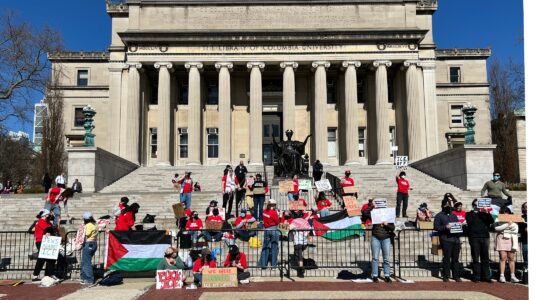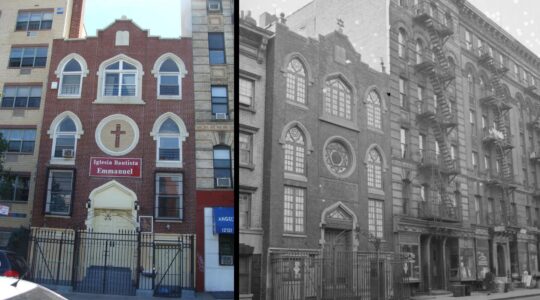It was 27 years ago when teen friends Larry Marion and Mitchel Weiser, classmates at Brooklyn’s John Dewey High School, bought tickets to attend a major rock concert in upstate New York.
But at the last minute, 16-year-old Larry’s mother forbid him to travel to Watkins Glen to hear the Grateful Dead and others at 1973’s Summer Jam festival.
"She completely flipped out," recalls Larry, now a 43-year-old music memorabilia dealer.
Larry says Mitch, 16, agreed to take the extra ticket for his 15-year-old girlfriend, Bonnie Bickwit, also a Dewey student. She was working as a mother’s helper at Camp Wel-Met, a popular Jewish Federation-sponsored camp in Narrowsburg, 90 miles north of the city.
"Mitch came by the day we were supposed to leave, picked up my ticket and went up," says Larry, publicly revealing the story for the first time. "He said, ‘I’ll see you Monday.’ That’s the last I ever saw of him."
Mitchel and Bonnie vanished the next day while hitchhiking from the camp 100 miles to the concert, never to be heard from again.
"For years I was haunted by feelings of guilt," Larry admits.
Their disappearance is classified as the oldest missing teens case in the United States.
A Jewish Week investigation found that Sullivan County and New York City police botched the case, including losing crucial original records.
But Mitch and Bonnie’s classmates never forgot them.
At an emotional reunion, about 100 people (old friends and classmates from across the country) gathered to plant a tree in their memory Saturday at the Dewey campus in Bensonhurst. And they called on state Attorney General Elliott Spitzer to order a new statewide probe to pursue recommendations made by TV manhunter John Walsh in The Jewish Week.
"We want the attention of the attorney general," declared Michelle Festa, Bonnie’s best friend in high school and now an attorney with a city agency.
Festa said she and her classmates felt powerless when they were teens and trusted the police. But now, "we are adults, we have jobs and kids and there is the Internet, and faxes and e-mails. Even with the passage of time it’s not too late to get closure."
Festa and others cited the new developments in the highly publicized 21-year-old case of Etan Patz, the 6-year-old Jewish boy who vanished from the streets of Soho in 1979: six years after Mitch and Bonnie. City police last week searched an old building basement for new evidence in the Patz case.
"This shows that things can be done," said Dewey graduate Bonnie Shipper, who like many friends said they were horrified to learn that the police failed to pursue the case in 1973.
"Just from a moral perspective the mayor, the governor or the attorney general of New York should order a real investigation, finally."
Veteran Sheriff Mike Maloney of Schuyler County, where the concert was held, agreed that more can and should be done. "I feel bad things weren’t followed up," he said.
A New York City police official said last week that the department has no responsibility in pursuing the case and that it is being handled by a detective in Sullivan County.
That detective, Lt. Anthony Suarez, told the Jewish Week two years ago that the original case files were lost, including a list of potential witnesses, investigator notes and the teens’ dental records, which could have been used to identify bodies.
In an interview with the New York Post on Sunday, Suarez admitted he has made no attempt to find any lost witnesses since being given the case in 1994. He has not tried to contact the original investigator, now retired and living in Florida.
A spokesman for Spitzer did not return calls for comment.
Dewey graduates raised nearly $1,000 through a spontaneous e-mail campaign to purchase a Norwegian Red Crimson Maple, a hardy tree indigenous to Brooklyn. They will soon place an unpolished pale gray granite stone with rough chiseled sides, inscribed with: "MITCH WEISER. BONNIE BICKWIT. WE STILL MISS YOU. CLASSES OF ’74 & ’75."
Under a bright blue, sunny sky, the friends, tears in their eyes, gathered in a circle to share memories of the teen couple. Many acknowledge years of dreams and nightmares about their lost friends.
"It was one of the most disturbing episodes of my youth," Robert Sapolsky, now a noted neurobiology professor at Stanford University, said of the disappearance. "I had nightmares for long afterwards."
Ellen Sperling, a Boston sculptor who spearheaded the tree-planting effort, was attending an honors program at Cornell University, near Watkins Glen in the summer of 1973. "I got a call telling me they may come to stay with me, so I stayed in my dorm room that night. But they never came."
Sperling is hard pressed to explain what drove her to undertake the ceremony planning, including a quick education about which trees grow best in Brooklyn.
"As a sculptor you have an inchoate feeling and you give it form. I’m giving these feelings form, but I can’t completely explain it," she said. "It still has this power. It was like this weird connection to have with other people who all were dreaming about the same people all these years later."
Sperling also felt for the surviving families. "How isolated and powerless they must have felt with their grief and the lack of interest on the part of the police."
Mitch’s sister, Susan Leibegott, related 27 years of frustration about being misled by police, and of not knowing that so many others were sharing her pain.
"I’m all choked up," she said, as the B train rumbled by on the elevated line that overlooks the school.
She said she recently recovered her brother’s missing baby teeth, which could be used now for DNA or identification purposes.
The New York Jewish Week brings you the stories behind the headlines, keeping you connected to Jewish life in New York. Help sustain the reporting you trust by donating today.




